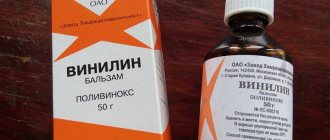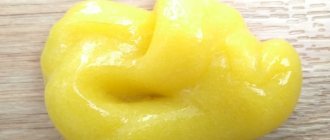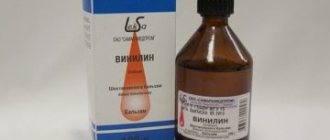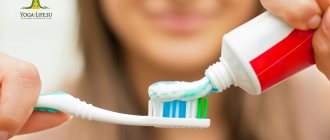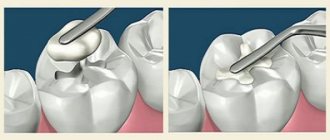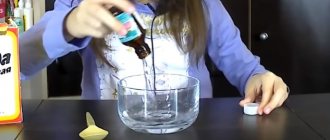An unpleasant disease affecting the oral cavity - stomatitis occurs mainly in children. However, adults also encounter this disease.
Small ulcers on the surface of the mucous membrane cause inconvenience and make you want to get rid of them as quickly as possible. And to do this, you don’t have to run to the pharmacy for expensive drugs.
It is worth paying attention to a cheaper but effective remedy - sodium tetraborate.
What is
Borax, as sodium tetraborate is also called, is a white, fine-crystalline powder, soluble in water or glycerin.
It is produced on the basis of boric acid, therefore it is a rather toxic substance. The composition of the drug includes 20 g of the active substance sodium tetraborate and 80 g of the auxiliary substance - glycerol.
The substance is used exclusively for local and external use. For the treatment of stomatitis, borax solution is used as a medicine for spot application, mouth rinse or application to damaged areas.
Description of the medicine
Sodium tetraborate is a salty-tasting powder that is easily soluble in water or glycerol (glycerol). Crystals of sodium tetraborate (borax) are also found in nature. The solution is applied locally to the affected tissue areas. Another name for the medicine is borax in glycerin. Tetraborate is also included in the composition of medicinal substances intended for the treatment of infectious diseases of the upper respiratory tract.
Borax in glycerin (20% solution) is available in 30 g glass bottles. This amount of substance is enough for 7 days of treatment. Usually the ulcers disappear after a week. Sodium tetraborate is also produced in the form of powder packages.
The action of the substance is aimed at eliminating the symptomatic and internal manifestations of the disease. The antiseptic properties of borax destroy harmful fungi and bacteria, and the antibacterial properties of borax block the growth and reproduction of pathogenic flora in the oral cavity.
pharmachologic effect
The action of borax is aimed at removing the cause of stomatitis and eliminating the centers of its spread. Due to the antiseptic and antibacterial effect, the drug prevents the appearance and increase in the number of microorganisms in the oral cavity.
The product is highly antifungal, so its use is justified in the treatment of stomatitis caused by fungus. Borax destroys the attachment of a fraction of the candida fungus to the mucous membrane and prevents the proliferation of its spores.
Release form
Sodium tetraborate is commercially available in two forms: as a prepared solution and tablets.
- A borax solution with a concentration of 20% is used to treat the affected surface of the mucous membrane in children. It is sold in glass bottles with a capacity of 30 grams. This amount is enough for a week's use, during which it is often possible to cope with the disease.
- When purchasing borax tablets, a mixture is prepared from them for rinsing: 2 pieces are dissolved in a glass of water. The prepared substance is used to rinse the mouth. This solution is toxic and therefore not recommended for use by children, as there is a risk of ingestion and poisoning.
Sodium tetraborate for stomatitis: use of the drug
Sodium tetraborate for stomatitis in children is used in the form of rinses, applications and spot application in areas of mucosal lesions. The dose of use is set by the doctor in accordance with the individual approach to the patient. Rinsing is indicated to eliminate the cause of the appearance and development of fungi in the mucosal tissues. Point application and applications to affected areas speed up the process of eliminating the disease.
Sodium tetraborate instructions for use for stomatitis:
- preparing the oral cavity for treatment - removing crusts;
- treating ulcers with a solution of borax on glycerin using a tampon;
- rinsing with an aqueous solution of borax.
To painlessly remove hardened crusts, they are lubricated with an oily solution of vitamin A. In addition to this drug, the cavity is also treated with other oils - rose hips, peach, flax.
The crusts do not need to be torn off - they are removed with a smooth movement after softening with oil. After this, tetraborate is applied to the area, which is easily absorbed into the tissue. Crusts must be removed: they prevent the penetration of borax into the mucous membrane.
Important! To relieve pain for infants when removing crusts, painkillers are used - with lidocaine.
Sodium tetraborate - use for acute stomatitis requires complex treatment of the entire surface of the mucous membrane. The technique is as follows:
- thoroughly sanitize hands before handling;
- soak the swab in borax;
- carefully treat the entire affected surface, starting from the root of the tongue and ending with the mucous membrane of the cheeks;
- Rinse your mouth thoroughly (for older children and adults).
The use of sodium tetraborate for stomatitis in children
Treatment of the surface of the mucous membrane in infants with medicine is carried out using a gauze swab (the gauze is wound on a finger and moistened with the solution); cotton swabs do not produce proper pressure on the membrane - the fungus remains on the surface.
Can the product be applied to a pacifier? Some mothers use this method to treat their infants for stomatitis, however, it is better to ask a pediatrician for advice. Firstly, you need to know the exact dosage of the drug, and secondly, the baby will swallow the medicine with saliva.
Important! Borax in glycerin is distinguished by its aggressive destruction of fungal pathogenic flora; to this day, there is no consensus among pediatricians about the safety of using tetraborate for infants. Borax is used only in severe cases of fungal infection of the oral cavity for spot treatment of individual ulcers.
For older children, rinsing is indicated in the following proportions:
- a cup of boiled chilled water;
- a tablespoon of salt;
- a coffee spoon of borax in glycerin.
How many times should the procedures be performed? The drug is not toxic, however, borax should not be used more than twice a day. In between uses, you can rinse with herbs or soda.
To prepare an aqueous solution of borax, adhere to the following scheme:
- 1 cup of boiled chilled water;
- 1 tablespoon of powder.
If stomatitis affects the mucous membrane of the lips, apply applications to the affected area. For infants, simply treat the surface of the lips with a swab.
Features of the drug use
Sodium tetraborate instructions for stomatitis in children do not limit the use of the drug for sore throat and damage to the throat mucosa. Enterprising mothers treat the surface of the skin of infants with diaper rash - for disinfection.
Detailed instructions for use
The use of sodium tetraborate is most effective for candidal stomatitis: the solution helps stop the spread of fungus on the mucous membrane of the oral surface. The specific use of borax depends on the severity of the disease, the area of the affected area, and the age of the patient.
In infants
This substance effectively fights fungal spores on the oral mucosa and prevents their reappearance.
Before treating the affected areas with borax, it is worth preparing the oral surface. With stomatitis, the ulcers are often covered with a crust, which prevents the absorption of the drug, so it must be removed. For infants, this is done as follows: a cotton swab is moistened with an oil solution of vitamin A, dried wounds are treated with it, and the crusts are removed with gentle movements.
Have you heard of this disease - black hairy tongue? We will tell you more about it in our next publication. And here you will learn about the features of treatment of submandibular lymphadenitis.
It is worth remembering that for infants the process of removing the crust can be quite painful, so preliminary anesthesia may be required. For these purposes, drugs containing lidocaine are used.
Further actions for treating fungal-affected areas of the mucous membrane boil down to the following steps:
- the tip of the index finger is wrapped in a sterile bandage;
- the bandage is moistened in a borax solution;
- The baby’s oral surface is treated: plaque is removed from the tongue, the inside of the cheeks and lips.
The described procedure for sanitation of a child’s oral cavity should be carried out no more than 2 times a day. The result will be noticeable after two days of using borax to treat sores.
To avoid relapse of the disease, it is necessary to clean the baby’s oral cavity within 3-4 days after the ulcers have completely healed.
In teenagers
For older children, two methods can be used: rinsing and spotting.
- Rinsing the mouth with borax solution. To prepare the solution, add a tablespoon of rock salt and half a teaspoon of borax to a glass of water. After dissolving the salt, the composition can be used to rinse the mouth.
- Spot treatment is carried out in the same way as in the case of infants. Use a cotton swab dipped in borax solution to wipe the tongue, inner surface of the lips and cheeks. This method is more effective because it allows you to more thoroughly remove plaque from the oral mucosa.
Sometimes the clinical manifestations of stomatitis have a different specificity: cracks and rashes appear on the lips. In this case, an application is used: wipes moistened with the solution are applied to the affected areas and left for a short period of time.
In the next video we will be told in more detail about stomatitis in children:
It is necessary to use the solution for rinsing or spot treatment of the oral cavity no more than twice a day. By treating the affected surface daily for a week, the problem will be eliminated.
In adults
Stomatitis is a disease not typical for adult patients. However, if there are signs of the development of a fungal infection in the oral cavity, you should also use borax in glycerin.
The treatment method for stomatitis in adults depends on the severity and extent of the disease.
There are several forms of development of stomatitis, the treatment of each of which has its own characteristics:
- Acute stomatitis characterized by the manifestation of all signs of the disease: redness of the mucous membrane, swelling, formation of ulcers, and the appearance of plaque.
To completely cure the disease and eliminate its root cause, the oral cavity must be treated with borax solution up to 6 times a day for 1 week.Using a gauze swab soaked in a medicinal substance, plaque is removed from the affected areas. In addition to spot treatment, you can use mouth rinses.
- If acute stomatitis is not completely cured and the immune system is weak, the disease passes into the chronic stage. The causative agent of the infection remains in the oral cavity and with a sharp decrease in the activity of the body’s immune system, it becomes active again.
For the treatment of chronic stomatitis, the oral cavity must be treated with a solution of sodium tetraborate up to 3 times a day for 2-3 weeks. If the disease cannot be eliminated during this period, you should seek help from your doctor.
To completely cure ulcers on the surface of the mucous membrane, it is recommended to use sea buckthorn oil, which has a healing effect. In addition, you should refrain from eating too hot food and drinks.
Damage to the mucous membrane: Stomatitis
Stomatitis (from ancient Greek στόμα - mouth) is the most common lesion of the oral mucosa.
The mechanism of stomatitis has not yet been fully identified, but most likely it is due to the reaction of the immune system to irritants. It is believed that stomatitis occurs in cases where, for reasons that are not yet clear, the human immune system reacts to the appearance of molecules that it cannot recognize. The appearance of such molecules provokes an attack by the lymphocytes of the immune system (a type of white blood cell), in much the same way that the human immune system reacts, for example, to an organ transplant. The “attack” of lymphocytes on these unidentified molecules leads to the appearance of ulcerative formations in the mouth, which are called “stomatitis”.
Local factors are also considered to be the cause of its occurrence: failure to comply with oral eubacteriosis. Diseases of the gastrointestinal tract, such as gastritis, duodenitis, colitis, as well as helminthic infestation, can cause catarrhal stomatitis.
With this disease, the oral mucosa becomes swollen, painful, hyperemic, and may be covered with a white or yellow coating. Hypersalivation (increased salivation) is noted. Bleeding gums and bad breath may occur.
Stomatitis itself is not contagious. With herpes, stomatitis can occur as a consequence, but this is already one of the options for a person’s reaction to the herpes simplex virus.
Varieties Allergic Aphthous Vesicular. The causative agent of the disease is an RNA virus belonging to the genus Vesiculorus of the Rabdoviridae family. Vesicular stomatitis is contagious. For this reason, it is recommended to use separate dishes and hygiene products (which should be disinfected after use, at least with boiling water). Herpetic. It is characterized by a sharp increase in temperature, increased drowsiness, and blisters (rash) form on the oral mucosa, which burst after 3 days. Accompanied by gingivitis, viscous saliva. The illness takes 8 days. Treated with interferon Catarrhal - caused by poor oral hygiene Traumatic Ulcerative
Probable causes and predisposing factors - microorganisms that cause infectious diseases (bacteria, viruses, mycoplasmas) - poor quality nutrition - mechanical or thermal damage to the oral cavity, - dehydration caused by diarrhea, vomiting, insufficient water intake, prolonged increase in body temperature, increased urine output , large blood loss – insufficient or excessive oral hygiene – poorly made or poorly installed dentures – use of medications that reduce salivation – vitamin deficiency (vitamin A, vitamin B, vitamin C), lack of iron or folic acid – smoking – malignant tumors in the neck , nose or pharynx – hormonal fluctuations (pregnancy, adolescence, etc.) – anemia – side effects of chemotherapy – prodromal period of HIV infection – Toothpastes and mouth cleaners containing sodium lauryl sulfate. Research suggests that using products containing sodium lauryl sulfate (SLS), a substance commonly found in toothpastes and cleaners to create foam, may make canker sore outbreaks more common. This may be due to the dehydrating effect that SLS has on the oral mucosa, which makes it vulnerable to various irritants, such as food acids. According to some studies, patients who used toothpastes without SLS claimed that they suffered from stomatitis less often. In one study, this reduction reached 81%. According to the same study, patients reported that even if stomatitis developed, the ulcers were less painful if during this period they did not use toothpastes containing SLS.
Diagnosis To identify stomatitis, the doctor usually first examines the patient's medical record and then begins a visual examination of the oral cavity. There are no specific medical tests (such as biopsy or culture) to detect stomatitis. The main sign of stomatitis is the appearance of the ulcers, their location and the fact that stomatitis is a recurring disease. In addition, with stomatitis, the tissue immediately surrounding the ulcer has a normal, healthy appearance, and the patient himself does not experience any significant systemic symptoms (for example, no high fever or feeling unwell). However, with advanced forms of stomatitis, especially in children, multiple ulcers, fever, and deterioration of health are observed.
Treatment methods In most cases, stomatitis goes away on its own within a week. Depending on the type of stomatitis, treatment can be carried out with antiviral, antifungal or other drugs; the type of lesion can be determined by a general practitioner or dentist; improper self-medication can lead to serious complications and generalization of the infection.
Usually, no specific therapy is required; it is enough to limit yourself to a gentle diet and frequent mouth rinses. You can use rinses with antiseptic properties: herbal infusions: chamomile, calendula; diluted aqueous-alcohol solutions of pharmaceutical tinctures (calendula, eucalyptus - 20-30 drops of tincture per 100 ml of water), various ready-made rinses (Dentix, etc.). To reduce pain symptoms, medications containing local anesthetics can be used (for example, Kamistad ointment, which contains lidocaine and chamomile extract). Partially helps is the use of lozenges, which increase salivation, which improves the irrigation of the wound with saliva and also achieves some antiseptic and distracting effect. A solution of baking soda and water has the same effect; chamomile decoction; honey. But the more effective solution is “Sodium Tetraborate”. It is enough to anoint the ulcer with this solution and everything will go away in 3-4 days.
Back at the end of the 20th century, the surest way to treat stomatitis was to lubricate the wound with blue; the disadvantage of this method is that the oral cavity will be blue from the dye solution. Under no circumstances should you use solutions containing alcohol (including iodine), they can cause burns.
Precautionary measures
Since sodium tetraborate is a drug with toxicity level 4, it must be used with caution.
Only external use of the solution is allowed. It is unacceptable to exceed the dosage prescribed by the attending physician. The same applies to the duration of treatment: too long use of the drug can lead to an overdose.
This article will help you learn how to treat a fistula on the gum at home and how treatment methods differ in adults and children. By following this link: you will find information about why dental fluorosis occurs, and you can also see photos of this disease.
And here are the common causes of a green coating on the tongue.
Contraindications for use
Contraindications to the use of the solution include:
- Pregnancy and breastfeeding period;
- Age up to 10 years (in exceptional cases, treatment of stomatitis in children is carried out under the supervision of a doctor);
- Hypersensitivity to one of the components of the drug;
- Violation of the integrity of the skin or mucous membranes.
The solution should not be taken orally. Partial ingestion is acceptable when treating the oral cavity during the treatment of stomatitis.
Before the first use, you must make sure that there is no allergic reaction to the drug. To do this, a small amount of sodium tetraborate must be applied to the area of skin or mucous membrane that is to be treated. If no discomfort appears within 2 hours, the solution can be used for treatment.
Side effects and overdose
The use of borax in glycerin in some cases is accompanied by such unpleasant side effects as redness of the mucous membrane at the site of treatment and a burning sensation. These symptoms are most often observed in patients prone to allergic reactions.
In case of an overdose of the drug, the following symptoms occur:
- general muscle weakness;
- nausea, vomiting, abdominal pain;
- diarrhea;
- muscle spasms of the face or limbs;
- loss of consciousness;
- arrhythmia.
The appearance of the described symptoms indicates the need for gastric lavage and refusal to further use the drug.
The consequence of an overdose of sodium tetraborate can be disturbances in cardiovascular activity, liver and kidney damage.
The lethal dose of the substance when taken orally is 10-20 g for an adult.
